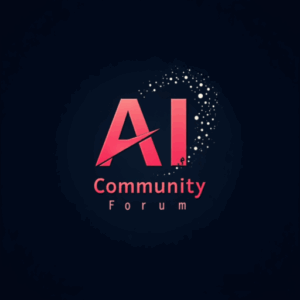Six months into 2025, layoffs at big tech are already making headlines. The narrative that AI is driving widespread job cuts has gripped the tech industry, with companies such as Microsoft, IBM, Chegg, Workday, CrowdStrike, PwC and Klarna citing AI as a factor in their workforce reductions.
According to Layoffs.fyi, over 50,000 tech employees have been laid off in 2025.
Microsoft is reportedly eliminating around 3% of its workforce, impacting approximately 6,000 employees across various roles, teams, and regions.
According to a WARN layoff notice from Washington, where Microsoft is headquartered, the job cuts will affect 1,985 employees in the state—1,510 working from offices and 475 in remote roles.
Notably, a developer who spent nearly two decades at Microsoft and helped make TypeScript 10 times faster was also among those laid off.
“After 18 years at Microsoft, with roughly a decade of that time working on TypeScript, I have unfortunately been let go in the latest round of layoffs. I need to take a few days to process before I start looking for work,” he wrote in a post on X.
AIM reached out to Microsoft for their response, but did not receive one by the time of publication.
Is AI to Blame?
While some say AI-driven efficiency is behind the layoffs, others cite the cost of building AI infrastructure that is making companies reduce headcount. “This isn’t about AI replacing humans yet—it’s about restructuring to fund AI initiatives. Microsoft plans to spend $80 billion on AI this fiscal year,” Wes Roth wrote on X. He also noted that analysts expect over 10,000 job cuts annually if such spending continues.
According to Deedy Das from Menlo Ventures, the rising cost of capital and the need to make large capital expenditure bets in generative AI infrastructure, particularly chips, are prompting companies to rethink their hiring strategies. He further added that gains in AI productivity may reduce the need for proportional headcount growth.
“Is this the new normal?” he asked, wondering whether Microsoft actually needs 4 lakh employees to double its business compared to when it had just 2 lakh employees. Notably, Microsoft chief Satya Nadella recently said that as much as 30% of the company’s code is now written by AI.
“I’d say maybe 20-30% of the code that is inside of our repos today and some of our projects are probably all written by software,” Nadella said during a recent conversation with Meta CEO Mark Zuckerberg.
Earlier this year, major tech companies, including Google and Meta, had announced layoffs.
Google laid off 200 employees from its global business organisation, which handles sales and partnerships. In April, the company cut hundreds of roles in its Platforms and Devices unit, responsible for Android, Pixel, and Chrome operations.
Meanwhile, Meta let go of 3,600 employees—about 5% of its workforce—focusing on performance-based cuts and internal restructuring.
Both companies are investing heavily in AI infrastructure in 2025. Zuckerberg announced plans to invest $60-$65 billion in capital expenditure during 2025 to expand the company’s AI infrastructure and computing capabilities.
On the other hand, Google plans to invest $75 billion in data centre infrastructure.
PwC cut 1,500 jobs across the US, citing overhiring during the pandemic and a shift towards automation. One of the affected employees told AIM that no specific reason was given. The layoff email simply referred to market challenges and internal restructuring, and the termination happened that same day.
Another employee who was laid off last year told AIM, “It’s pathetic on their part. While hiring, they take four rounds of interviews and weeks to onboard, but when it comes to firing, a single call lasting just a few minutes was enough to deliver the news.”
IBM chief Arvind Krishna, in a recent interview with The Wall Street Journal, said the company has replaced 200 human resources workers with AI agents.
Instead of shrinking, IBM’s workforce has expanded as the company has reinvested the resources freed up by layoffs into hiring more programmers and sales personnel. “Our total employment has actually gone up, because what [AI] does is it gives you more investment to put into other areas,” Krishna told WSJ.
According to IBM’s chief human resources officer, Nickle LaMoreaux, this shift doesn’t mean jobs will disappear entirely. “Very few roles will be completely replaced,” she said. Instead, AI is expected to handle routine tasks, allowing employees to concentrate on responsibilities that involve judgment and decision-making.
Meanwhile, ed-tech platform Chegg announced that it is planning to lay off 248 employees, or roughly 22% of its workforce, to reduce expenses and simplify operations, as more students shift from traditional edtech services to tools like ChatGPT.
Similarly, language learning platform Duolingo announced that it will phase out human contractors for tasks that can be handled by AI, as part of a broader shift to an “AI-first” approach. More than doubling its total offerings, the company recently added 148 new language courses in its largest content expansion to date, crediting AI for the achievement.
The Bigger Picture
The truth likely lies in a grey area. As seen at companies such as Chegg and CrowdStrike, AI is automating tasks like coding, customer service, and data analysis—namely jobs that once relied on human labour. However, the scale of so-called “AI layoffs” is often exaggerated.
While AI’s impact on job displacement is real, some analysts and insiders believe companies are using AI as a convenient excuse for layoffs driven by other strategic or financial reasons.
For instance, Klarna, the popular buy-now-pay-later platform, is adjusting its approach after leaning heavily on AI for customer service. CEO Sebastian Siemiatkowski recently shared that the company intends to bring human agents back into the loop, acknowledging that over-reliance on AI may have negatively impacted customer interactions.
With inputs from Amisha Arya



